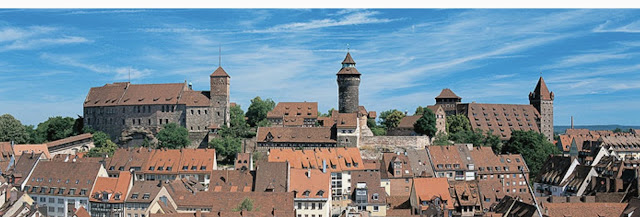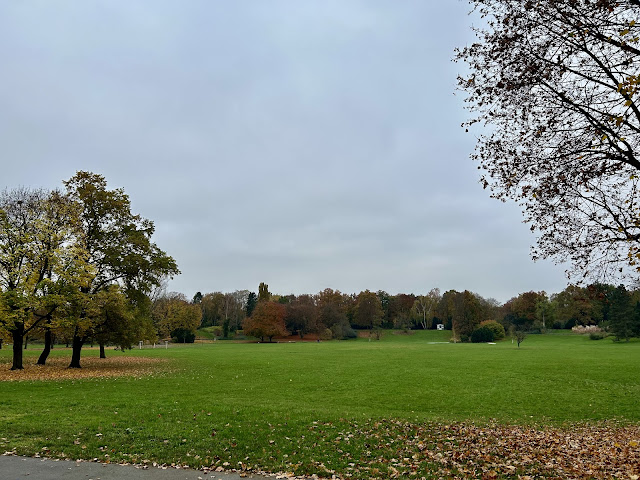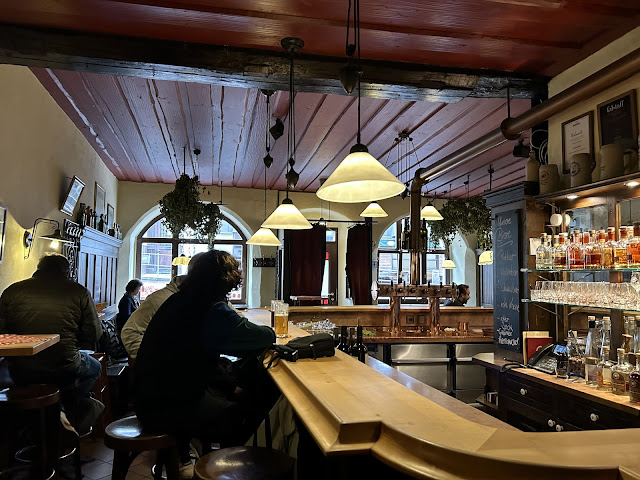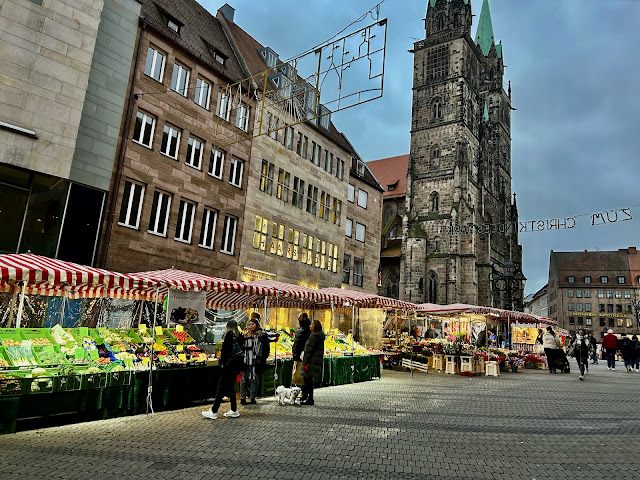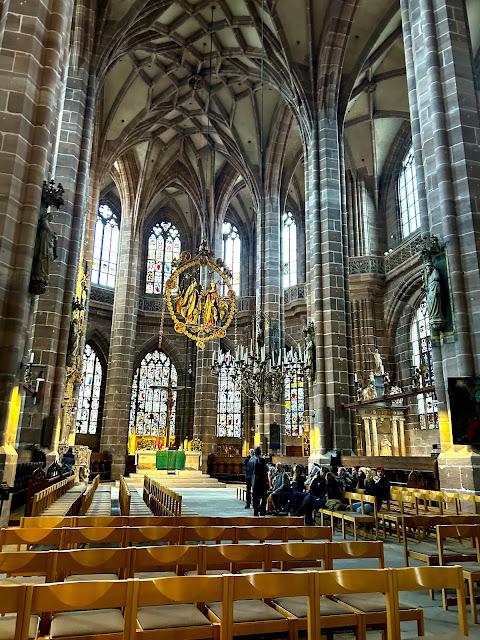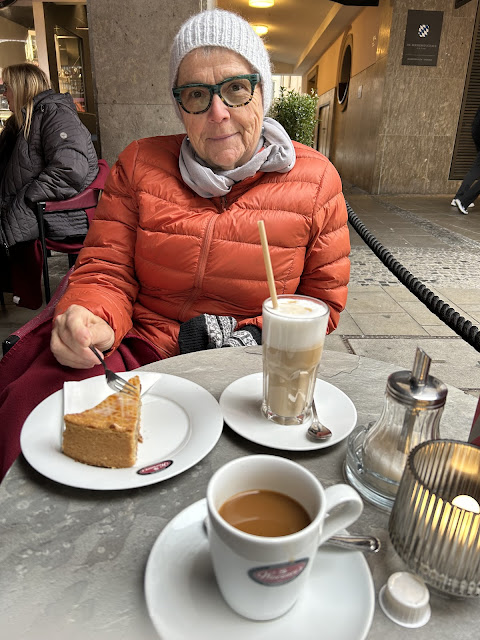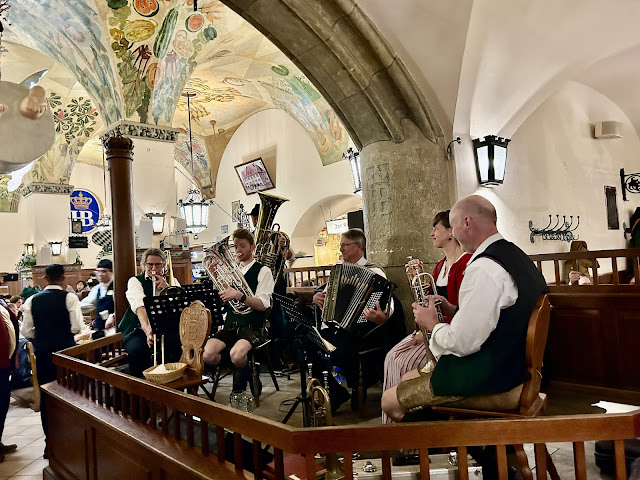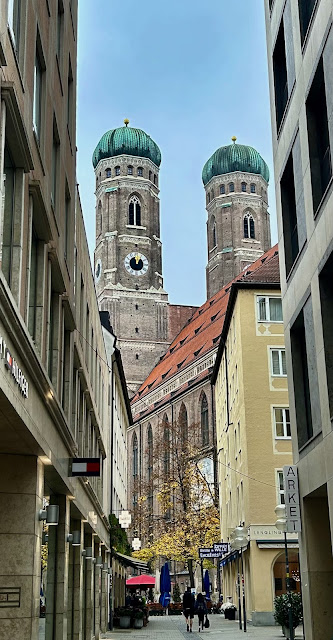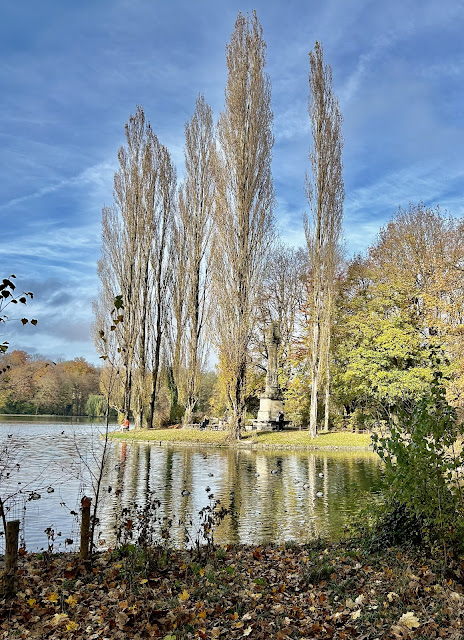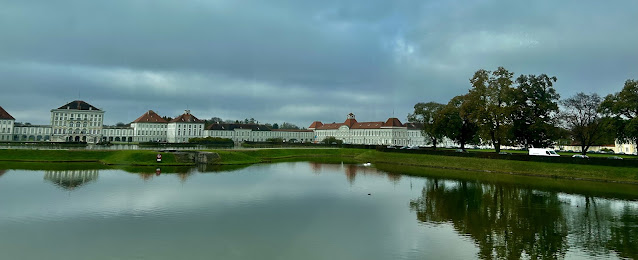On the way to Berlin from Munich we decided to stop overnight in Nuremberg as we were interested in the WW11 history here. We hired a guide for half a day who did a good job of giving us the history and taking us to the sights…
Nuremberg has one of the most intact fortified castles in Europe and stands above the city of approximately 550,000 people. It was first built in 1000 and represented the power and significance of the Holy Roman Empire. The walls and towers are still intact and surround the city below…
Don walking through one of the gates in the thick walls.
Our guide picked us up and brought us first to the place called Erhenhalle which was used as Nazi Rally grounds. The memorial was originally built as a memorial to WW1 soldiers but Hitler took it over as a memorial for martyrs of Nazism. This is what it looks like today…
And this is what it looked like in 1933…
Today the Memorial is used as a memorial to all fallen soldiers…
Hitler chose Nuremberg as a base in the 1930s as it was a central position from which to reach out to the rest of the country and Europe. During the Nazi reign here many railways were built to transport soldiers as well as people to the camps…
Hitler had great plans for Nuremberg including building a Nazi city and some of these buildings are still to be seen today…
Here is the unfinished Congress building that he modelled on the Roman Coliseum. He intended it to seat 50,000 and again a place for his speeches and rallies….
The US military blew the top of and it was declared unsafe however we could still climb the steps and stand on the podium and imagine…
Our guide gave us so much history it made our heads spin! There are many company headquarters in Nuremberg which were also associated with the Nazis…Hugo Boss who made the uniforms, Bayer who produced much of the ingredients for the gas used in the camps, BMW, Volkswagen and other German car makers that contributed to the war effort.
Many of them were sentenced to death, but unfortunately Hitler, Himmiler and Goebbels had committed suicide and could not be tried.
Great little restaurants to eat local…
Christmas markets are big here in Germany and Nuremberg is getting ready for theirs as well so lots of lights around the city…
This church is called St. Lawerence Church and was built in 1250, it is an Evangelical Lutheran Church and is quite grand…
We enjoyed our brief stop in Nuremberg both for the history and the beauty of the city. Now on to our last stop for this trip, Berlin.
